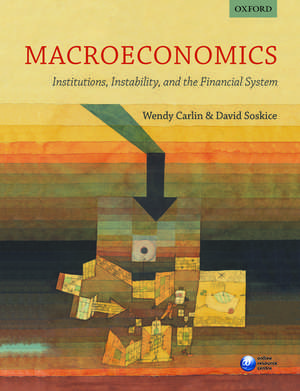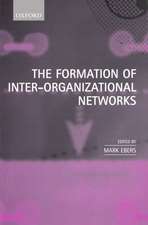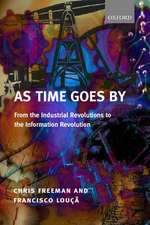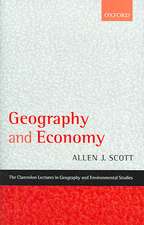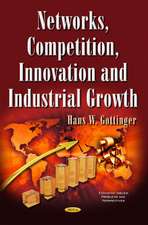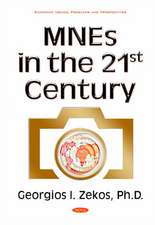Macroeconomics: Institutions, Instability, and the Financial System
Autor Wendy Carlin, David Soskiceen Limba Engleză Paperback – 20 noi 2014
| Toate formatele și edițiile | Preț | Express |
|---|---|---|
| Paperback (3) | 391.41 lei 10-16 zile | +107.31 lei 7-11 zile |
| OUP OXFORD – 29 ian 2024 | 391.41 lei 10-16 zile | +107.31 lei 7-11 zile |
| OUP OXFORD – 20 noi 2014 | 476.05 lei 10-16 zile | +104.22 lei 7-11 zile |
| OUP OXFORD – 15 dec 2005 | 521.35 lei 10-16 zile | +108.54 lei 7-11 zile |
Preț: 476.05 lei
Preț vechi: 576.36 lei
-17% Nou
Puncte Express: 714
Preț estimativ în valută:
91.09€ • 95.11$ • 75.22£
91.09€ • 95.11$ • 75.22£
Carte disponibilă
Livrare economică 14-20 martie
Livrare express 11-15 martie pentru 114.21 lei
Preluare comenzi: 021 569.72.76
Specificații
ISBN-13: 9780199655793
ISBN-10: 0199655790
Pagini: 680
Ilustrații: illustrations
Dimensiuni: 189 x 247 x 27 mm
Greutate: 1.28 kg
Editura: OUP OXFORD
Colecția OUP Oxford
Locul publicării:Oxford, United Kingdom
ISBN-10: 0199655790
Pagini: 680
Ilustrații: illustrations
Dimensiuni: 189 x 247 x 27 mm
Greutate: 1.28 kg
Editura: OUP OXFORD
Colecția OUP Oxford
Locul publicării:Oxford, United Kingdom
Recenzii
This new book is almost enough to make me wish I was still teaching Macroeconomics. It gives finance the position in macro that recent events suggest it deserves
Carlin and Soskice have produced a gem of a book. The teaching of macroeconomics after the crisis has changed surprisingly little, limiting itself to incorporating 'frictions' into otherwise standard models that failed during the crisis. Carlin and Soskice embark on a much more ambitious venture. They show how the financial cycle and macroeconomics are inextricably linked, with the risk-taking channel as the linchpin. Their exposition is refreshingly original and yet lucid and accessible. This book will appeal to serious students of economics and to all inquiring minds who have wondered about the role of the financial cycle in macroeconomics.
This is, I believe, the first macro-economic textbook effectively to incorporate the lessons of the Great Financial Crisis and to describe how financial frictions can impact the macro-economy. The authors weave together the old mainstream, three equation, model with the newer account of potential financial disturbances in a lucid and efficient manner. As such, it has a major advantage over almost all other extant textbooks, and will be a boon not only for undergraduates, but also for graduates and those wishing to understand the current working of our macro-economic system, beset as it has been with financial strains.
This illuminating book introduces the reader to macroeconomics in a revolutionary fashion. Namely, by means of very elegant and accessible models that are always based on sound microfoundations and developed against a narrative of the performance and policy regimes of the advanced economies over the post war period. Unlike most other macro textbooks, this book builds on the most recent research and debates to teach macroeconomics the way it should now be taught: by emphasizing the interplay between macro and finance; by linking growth to innovation, market structure and firm dynamics; and more generally by taking institutions seriously into account when looking at growth, business cycles, and unemployment and the interplay between them. This book is an absolute must read for students and policy makers, even those with little initial background, who need to be fully acquainted with modern macroeconomics.
This is an exciting new textbook. It offers a clear and cogent framework for understanding not only the traditional macroeconomic issues of business cycles, inflation and growth, but also the financial crisis and ensuing Great Recession that have recently shaken the world economy. The paradigm it offers is highly accessible to undergraduates. Yet at the same time it is consistent with what goes on at the frontiers of the field. Overall, the book confirms my belief that macroeconomics is alive and well!
To be relevant, economics need to help society understand those phenomena which do it greatest harm - unemployment, inflation and deflation, financial instability, fiscal and banking crisis. Pre-crisis, mainstream economic models failed that societal test and therefore failed society. Wendy Carlin and David Soskice's important new book is the first step towards redemption, providing students and scholars with a rigorous but accessible framework for understanding what troubles society most.
The Carlin and Soskice book does a wonderful job of covering the economics behind macroeconomics and the financial system, alongside presenting the latest research on this and the drivers of the great recession. It also has an impressive array of data and examples woven in with theory explained in a beautifully intuitive way. For any student interested in a refreshingly modern take on the financial crisis and the economics that underlie this, this book is invaluable.
One of the first macro textbooks to integrate the lessons of the crisis. An elegant bridge between introductory undergraduate and graduate macro texts
In the light of the events of the past decade, it is important that a new macroeconomics text attempts to satisfy the demands of those learning and using macroeconomics to be able to access relatively simple models which reflect the ways in which the financial sector interacts with the real economy. This is by no means an easy task. The new Carlin and Soskice book represents a significant step forward in this regard. Consequently undergraduates, post-graduates and their teachers should be grateful that they can now access teaching materials which have something useful to say about the financial crisis.
Carlin and Soskice have produced a gem of a book. The teaching of macroeconomics after the crisis has changed surprisingly little, limiting itself to incorporating 'frictions' into otherwise standard models that failed during the crisis. Carlin and Soskice embark on a much more ambitious venture. They show how the financial cycle and macroeconomics are inextricably linked, with the risk-taking channel as the linchpin. Their exposition is refreshingly original and yet lucid and accessible. This book will appeal to serious students of economics and to all inquiring minds who have wondered about the role of the financial cycle in macroeconomics.
This is, I believe, the first macro-economic textbook effectively to incorporate the lessons of the Great Financial Crisis and to describe how financial frictions can impact the macro-economy. The authors weave together the old mainstream, three equation, model with the newer account of potential financial disturbances in a lucid and efficient manner. As such, it has a major advantage over almost all other extant textbooks, and will be a boon not only for undergraduates, but also for graduates and those wishing to understand the current working of our macro-economic system, beset as it has been with financial strains.
This illuminating book introduces the reader to macroeconomics in a revolutionary fashion. Namely, by means of very elegant and accessible models that are always based on sound microfoundations and developed against a narrative of the performance and policy regimes of the advanced economies over the post war period. Unlike most other macro textbooks, this book builds on the most recent research and debates to teach macroeconomics the way it should now be taught: by emphasizing the interplay between macro and finance; by linking growth to innovation, market structure and firm dynamics; and more generally by taking institutions seriously into account when looking at growth, business cycles, and unemployment and the interplay between them. This book is an absolute must read for students and policy makers, even those with little initial background, who need to be fully acquainted with modern macroeconomics.
This is an exciting new textbook. It offers a clear and cogent framework for understanding not only the traditional macroeconomic issues of business cycles, inflation and growth, but also the financial crisis and ensuing Great Recession that have recently shaken the world economy. The paradigm it offers is highly accessible to undergraduates. Yet at the same time it is consistent with what goes on at the frontiers of the field. Overall, the book confirms my belief that macroeconomics is alive and well!
To be relevant, economics need to help society understand those phenomena which do it greatest harm - unemployment, inflation and deflation, financial instability, fiscal and banking crisis. Pre-crisis, mainstream economic models failed that societal test and therefore failed society. Wendy Carlin and David Soskice's important new book is the first step towards redemption, providing students and scholars with a rigorous but accessible framework for understanding what troubles society most.
The Carlin and Soskice book does a wonderful job of covering the economics behind macroeconomics and the financial system, alongside presenting the latest research on this and the drivers of the great recession. It also has an impressive array of data and examples woven in with theory explained in a beautifully intuitive way. For any student interested in a refreshingly modern take on the financial crisis and the economics that underlie this, this book is invaluable.
One of the first macro textbooks to integrate the lessons of the crisis. An elegant bridge between introductory undergraduate and graduate macro texts
In the light of the events of the past decade, it is important that a new macroeconomics text attempts to satisfy the demands of those learning and using macroeconomics to be able to access relatively simple models which reflect the ways in which the financial sector interacts with the real economy. This is by no means an easy task. The new Carlin and Soskice book represents a significant step forward in this regard. Consequently undergraduates, post-graduates and their teachers should be grateful that they can now access teaching materials which have something useful to say about the financial crisis.
Notă biografică
Wendy Carlin is Professor of Economics at University College London and Research Fellow of the Centre for Economic Policy Research. David Soskice, FBA, is School Professor of Political Science and Economics at The London School of Economics and Political Science.
